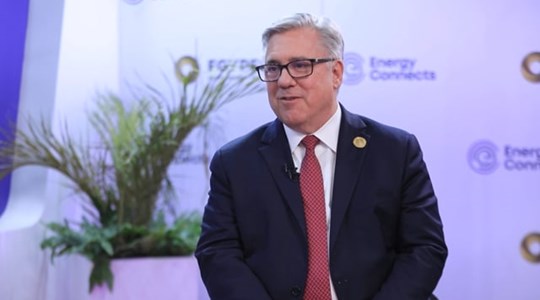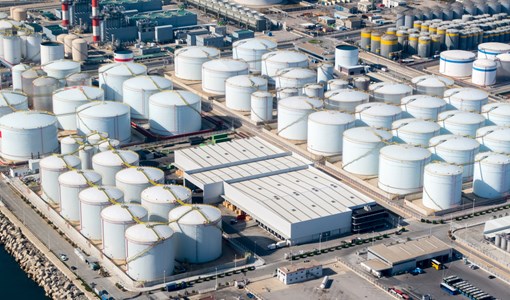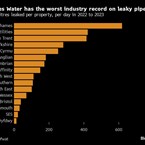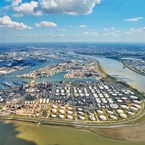The Middle East’s energy transition – is the future hydrogen powered?
By: Richard Devine and Ana Severova partners at Devine & Severova FZ-LLC, a boutique oil and gas legal consultancy based in the UAE
To meet the carbon reduction targets enshrined in the Paris Climate Agreement, the world must rapidly reduce its reliance on energy sources that emit carbon. Hydrogen is ubiquitous, practically inexhaustible, produces only water when burnt and carries three times as much energy per unit weight as petrol, diesel, or jet fuel. Hydrogen has carried mankind to the moon and its utopian virtues have led many to identify it as the future of clean energy.
The UAE has recognised the opportunity this presents and on 17 January 2021, Mubadala Investment Company, ADNOC and ADQ announced that they have entered into a Memorandum of Understanding to establish the Abu Dhabi Hydrogen Alliance (the Alliance).
Mubadala’s website reports that the Alliance will: establish Abu Dhabi as a trusted leader of low-carbon green and blue hydrogen in emerging international markets; build a substantial green hydrogen economy in the UAE; develop a roadmap to accelerate the UAE’s adoption and use of hydrogen in major sectors such as utilities, mobility and industry; and align on their approach to international markets with the aim of positioning Abu Dhabi as a reliable and secure supplier of hydrogen and its carriers to customers around the world as demand grows.
The UAE is part of a crowded field backing hydrogen development. Saudi Arabia is pursuing one of the world’s largest hydrogen projects to date on its Red Sea coast and, internationally, the EU, Japanese and Australian governments, amongst many others, have all made far-reaching capital-intensive commitments to stimulate the use of hydrogen in their economies. The private sector is heavily involved, and the Hydrogen Council was established in 2017 as, in its own words, “a CEO-led organisation that uses its global reach to promote collaboration between governments, industry and investors, and to provide guidance on accelerating the deployment of hydrogen solutions around the world”. The group’s members include Aramco, BP, Chevron, Mubadala, Microsoft and Shell.
Hydrogen has, of course, been “the future” before. Japan has been pursuing hydrogen fuel initiatives for fifty years and President George W. Bush’s State of the Union in 2003 predicted: “With a new national commitment, our scientists and engineers will overcome obstacles to taking these cars from laboratory to showroom, so that the first car driven by a child born today could be powered by hydrogen, and pollution-free.”
In this article, we try to separate the hyperbole from the practical, and consider what role hydrogen might play in reducing greenhouse gases and the energy transition, particularly in the Middle Eastern context.
What is hydrogen currently used for?
At present, hydrogen is principally utilised for industrial processes to upgrade fossil fuels, to produce ammonia and methanol and as a coolant in generators. Proponents of hydrogen-based economies believe that hydrogen can play a much wider role. Its versatility means that it can be used as an energy carrier and as a fuel for combustion.
How is hydrogen produced and does it mitigate carbon emissions?
Hydrogen is found naturally in compounds and energy is required to separate it from the other elements. Most hydrogen is currently produced through steam methane reformation, a process by which high temperature and pressure break methane into hydrogen and carbon oxides. This process creates, rather than mitigates, carbon emissions.
There are, however, alternative means of production. Hydrogen can be produced by electrolysis: the process of using electricity to split water into hydrogen and oxygen in a unit called an electrolyser. Electrolysis is currently more expensive than steam methane reformation and only mitigates carbon emissions if powered by electricity whose generation does not itself create carbon emissions. This may not be a formidable obstacle as abundant and cheap renewable electricity is a fundamental part of the world’s carbon reduction goals.
To meet carbon reduction targets, the greatest proportion of the world’s electricity will need to be generated from renewable sources. Massive progress has been made in reducing the costs of solar and wind power over the past decade, although relying solely on renewable energy is not without problems. The biggest conundrum renewable energy presents is intermittency. Electricity is generated as and when the renewable sources (such as sun and wind) are available. Electricity demand does not always align with such availability and when supply exceeds demand, generation may need to be curtailed to prevent system imbalances.
Hydrogen might be a “silver bullet” for the intermittency problem. Instead of curtailing the production of renewable power when demand is low, such power could be generated and used to produce hydrogen by electrolysis. The hydrogen produced could be stored and used to generate power when the sun or wind is not available. Hydrogen therefore presents as a very elegant solution to one of the most fundamental drawbacks of renewable power.
This is not the complete picture, however. In order for this to be a truly effective solution, economically viable solutions for storing and distributing hydrogen will need to be found. In addition, electrolysers are currently expensive and need to be operated at close to capacity to recoup the capital investment. Near continuous operation using only renewable energy is likely to be a challenge because of the intermittency issue. Nonetheless, progress in reducing the cost of electrolysers and smart technology will make it easier to manage these problems.
What role might hydrogen play in reducing greenhouse gases and the energy transition?
Hydrogen is colour coded, depending upon the carbon emitted in its production. Hydrogen produced by renewable power is known as green hydrogen. Hydrogen produced from fossil fuels is known as grey hydrogen (when produced from natural gas) or brown hydrogen (when produced from coal). Blue hydrogen is hydrogen produced from fossil fuels where the carbon emissions have been mitigated by carbon capture, utilisation and storage.
Substituting green and blue hydrogen for grey or brown hydrogen (or other carbon emitting energy sources) will help reduce greenhouse gases. Substitution seems inevitable for certain existing applications. It does not take much imagination to predict that, once cost competitive, green and blue hydrogen will displace carbon-intensive hydrogen in refineries, ammonia and methanol production and as a feedstock for chemicals. These are activities for which electricity cannot act as a substitute for hydrogen.
Steel is another industry where green and blue hydrogen could be utilised. The steel industry’s carbon emissions are mainly as a result of its use of coking coal in blast furnaces and such coal could be replaced by green or blue hydrogen. Providing the ultra-high temperatures required with electricity is currently very difficult and does not seem to be a feasible option in the short term. A more feasible, environmentally friendly option would be the use of natural gas together with carbon capture and storage.
Substituting hydrogen for natural gas as a fuel for industrial heat (e.g., in glass manufacture) is another possibility. On the basis of current cost projections, this is not a certainty, however, and much will depend on local markets, technological advancements and applicable policies affecting the price of natural gas and hydrogen. Advancements in heat pump technology mean that green electricity currently seems a better solution than green hydrogen because it is cheaper per unit of heat, it is better at enabling end-use efficiency and the infrastructure for transporting electricity already exists.
The same preference should apply equally to home heating. Many countries, however, already have existing natural gas networks and consumers are familiar with using gas for home heating. If such networks can be repurposed for hydrogen (or even a mixture of natural gas and hydrogen) then hydrogen may have a greater role in home heating. Several countries, including the UK, have begun trial projects.
The other great hopes for hydrogen use are in transportation. Hydrogen might be a good fit for the maritime sector, as electrifying vessels used for long journeys is not practical. The use of hydrogen in aviation is still at the experimental stage, but for longer routes hybrid electric and hydrogen fueled airplanes might be feasible.
The image of a car running on “free” gas and emitting only steam is appealing, but hydrogen fueled vehicles have made very little impact to date. The metrics of hydrogen fueled vehicles do not compare well with electric vehicles in the light transport segment (e.g., motorcycles, cars and vans) but hydrogen powered trucks and buses present a more compelling economic case. Developing the supporting infrastructure for refueling hydrogen powered cars, however, will be expensive and time consuming. In this respect, hydrogen powered cars are well behind electric cars, which can be easily charged at home.
The economic and financing challenges of hydrogen production
In theory, there are multiple applications for hydrogen. In practice, hydrogen is not currently pervasive in the energy sector because it is more expensive than the alternatives. The principal costs of green hydrogen are the cost of renewable electricity, the capacity factor at which plants run, the cost of electrolysers and the cost of capital. Most hydrogen production facilities have high capital and fixed costs, so investors need to operate at very high load factors to recoup their investment. The infrastructure necessary to enable hydrogen supply (whether it be transportation and distribution networks or hydrogen stations to refill cars) generally does not exist and will need to be created.
For an uncertain period of time, the orthodoxy is that hydrogen will only be economic with financial support from governments. The design and form of such support will be complex given that hydrogen is not a replacement for a sole alternative (e.g., hydrogen might replace natural gas for an industrial user but replace electricity or diesel for a vehicle) and relevant technologies are at different stages of development. Logically, there should be more political support for use cases that combine decarbonization with other benefits, such as generating skilled employment.
Support will be needed on the supply side and on the demand side. Suppliers will want assurances that their product will be purchased, and consumers will want assurances about security of supply. A challenge for hydrogen projects is that offtake opportunities are currently limited. Potential offtake markets include gas network operators, the transport sector, grids (as an energy storage vector) and industry, although green hydrogen will need to become cost competitive to compete with other energy sources.
Financiers will lend only if there is balance between the rewards on offer and the risk that the financed assets may become stranded in future and therefore worthless. Of course, if financiers charge a high-risk premium, this handicaps hydrogen projects from the outset. Debt finance is relatively plentiful for standard renewable energy projects like solar and wind, however financiers may be deterred by the limited offtake opportunities for green hydrogen. The support of multi-lateral banks, private equity investors and pension funds interested in the market may cover any liquidity shortfall. Another way to finance such projects is through partnership with governmental organisations. In order for projects to succeed, risks associated with hydrogen projects will need to be carefully allocated between hydrogen investors, infrastructure investors, customers and government.
By some estimates, the total government stimulus for the COVID-19 crisis is already triple that for the entire 2008–09 recession and there are already calls to direct this money towards sustainable green initiatives. Some of the incentive and subsidy schemes applied to renewable energy may be repurposed for hydrogen. For example, in the EU, contracts for differences are used to ensure renewable project developers are compensated for the actual cost of cutting carbon emissions notwithstanding the prevailing carbon price in the EU’s cap and trade scheme.
What are the legal challenges?
The legal challenges facing the use of hydrogen will naturally depend upon the relevant development and jurisdiction. It will be a large undertaking to develop (or adopt) the relevant legislative and regulatory framework for hydrogen. Hydrogen Europe has started to develop a database on European laws relating to hydrogen and their categorisation of such laws provides a useful overview of the scale of the challenge. Rules and regulations will need to address:
The production of hydrogen
Stationary storage of hydrogen
Transport and distribution of hydrogen
The use of hydrogen as a fuel and refueling infrastructure for mobility purposes
Hydrogen powered vehicles
Electricity grid issues for electrolysers
Gas grid issues
Stationary power, fuel cells.
Within each of these categories, lawmakers will need to consider permitting and land use, health, environment and safety, specifications (e.g., quality, measurement and pressure), connections to infrastructure and consumer protection. In many jurisdictions, rules on state aid and anti-competitive practices may complicate the basis on which government support may be provided.
Even for off-grid hydrogen projects, we predict that the contractual framework would be complex, although most of the concepts will have been considered in other contexts. Whilst it will take time to reach commercial agreement and establish market precedents for the scope and allocation of various project risks (e.g., force majeure risk, technology risk, construction risk, operational risk, supply risk and offtake risk) once this is agreed, it should be relatively straightforward to reflect these in legal agreements.
In most Middle Eastern jurisdictions, there is currently no comprehensive regulatory framework for hydrogen projects. Any projects would likely need to follow laws and regulations applicable to oil and gas in each jurisdiction. We note however that in 2019, the Emirates Authority for Standardization and Metrology announced that it had completed draft technical regulations for hydrogen-powered vehicles.
Despite the lack of legislation, some Middle Eastern countries such as the UAE have a proven track record of finding ways to enable and incentivise projects that align with their strategy by either accommodating such projects within existing legal frameworks, creating new legislation relatively quickly, or facilitating such projects on a case-by-case basis with involvement of governmental organisations.
Will the Middle East lead the hydrogen revolution?
The Middle East (and the GCC countries in particular) have several advantages for hydrogen production: large areas of barren, flat land, relatively low domestic consumption of power, and one disadvantage (namely, electrolysis requires demineralised water and there is a scarcity of freshwater in the region).
The Middle East enjoys strong regular sunshine and has significant wind resources. Solar power in the UAE is amongst the cheapest in the world. Low-cost renewable electricity is critical for producing green hydrogen and the GCC will have a clear advantage over many other markets. Many oil producing nations in the Middle East (e.g., the UAE and the Kingdom of Saudi Arabia) are also investing heavily in carbon capture and storage technologies, which could facilitate blue hydrogen production.
The Middle East is also at the forefront of scaling hydrogen projects. The Kingdom of Saudi Arabia is already pursuing what has been reported to be the world’s largest green hydrogen project.A joint venture between NEOM, Air Products and ACWA Power will integrate four gigawatts of renewable power from solar, wind and storage into the production of 650 tons per day of hydrogen by electrolysis; production of nitrogen by air separation; and production of 1.2 million tons per year of green ammonia. The project is scheduled to be onstream in 2025. Air Products will be the exclusive offtaker of the green ammonia and intends to transport it around the world to be dissociated to produce green hydrogen for the transportation market.
Whilst the backlash against globalisation and the COVID-19 pandemic has been a sharp reminder to policy makers of the benefits of local supply, the reality is that some parts of the world will produce green and blue hydrogen more cheaply than others. If hydrogen is adopted at scale globally, there are likely to be several huge markets that will need to rely on imports from the Middle East. By their track record in the hydrocarbon market, the GCC countries have shown themselves to be dependable suppliers of energy and hydrogen could be a neat segue from oil and gas.
Conclusion
Since hydrogen has excited attention before, commentators need to be careful about bold predictions of its success. The economic case for hydrogen’s place in the energy mix is, however, close to making itself, advocacy for hydrogen is at a peak and political support is intense. Liquid hydrogen currently propels the UAE’s missions to Mars, and there would be a pleasing symmetry if it also transformed the UAE (and other petrostates) into the clean energy suppliers of the future.
KEEPING THE ENERGY INDUSTRY CONNECTED
Subscribe to our newsletter and get the best of Energy Connects directly to your inbox each week.
By subscribing, you agree to the processing of your personal data by dmg events as described in the Privacy Policy.

Chevron helping drive Egypt’s journey to become Africa’s energy powerhouse
Mar 11, 2024
Energy Workforce helps bridge the gender gap in the industry
Mar 08, 2024
EGYPES Climatech champion on a mission to combat climate change
Mar 04, 2024
Fertiglobe’s sustainability journey
Feb 29, 2024
P&O Maritime Logistics pushing for greater decarbonisation
Feb 27, 2024
India’s energy sector presents lucrative opportunities for global companies
Jan 31, 2024
Oil India charts the course to ambitious energy growth
Jan 25, 2024
Maritime sector is stepping up to the challenges of decarbonisation
Jan 08, 2024
COP28: turning transition challenges into clean energy opportunities
Dec 08, 2023
Why 2030 is a pivotal year in the race to net zero
Oct 26, 2023Partner content

Ebara Elliott Energy offers a range of products for a sustainable energy economy

Essar outlines how its CBM contribution is bolstering for India’s energy landscape

Positioning petrochemicals market in the emerging circular economy

Navigating markets and creating significant regional opportunities with Spectrum




























